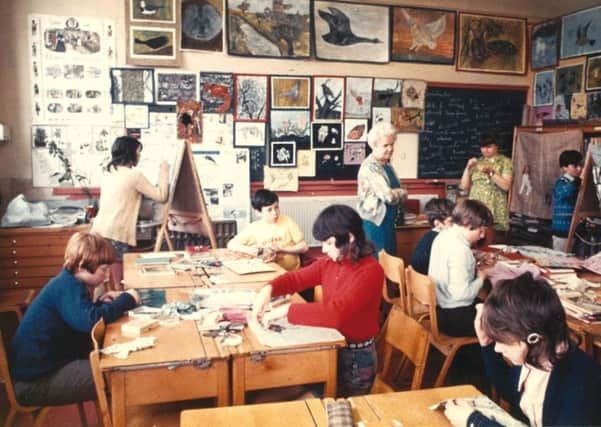Wakefield exhibition recreates Mrs Pyrah’s Castleford classroom


The archivists gave me a tour of the collection and were keen to show me materials relating to a Wakefield teacher, Mrs Pyrah.
In the early 1970s a primary class at Airedale School, Castleford made national news when they achieved exceptionally high academic results. It appears that this was the effect of the radical teaching methods of Muriel Pyrah, an untrained teacher. Her methods went on to be studied internationally by many.
Advertisement
Hide AdAdvertisement
Hide AdAt the NAEA I browsed through archive boxes of children’s artwork. They showed control and careful observational detail. Everything drawn was either from the natural world, history or science. In the children’s art and written work there was a noticeable absence of fantasy – no made up stories, monsters or princesses.
I also read through some of Pyrah’s own notes. I liked her clarity and her unlikely rebellious streak. I loved that she took the kids out of school so much – into nature and on trips to see other cities.
Pyrah also appealed to me as an outsider, an untrained teacher bringing creative and experimental forms of teaching into play. To my mind she was an educational maverick.
In 2018, I was invited to revisit Mrs Pyrah for an exhibition at YSP. I was still interested in her, and probably even more so than before.
Advertisement
Hide AdAdvertisement
Hide AdHer ideas – encouraging children to have self-determination and to speak out about themselves and their ideas – seemed more relevant than ever. I thought how interesting it could be to bring this to life, in my exhibition, by recreating her classroom.
I met former pupils who offered deeper, unexpected and somewhat difficult insights into the class. Pyrah had a huge effect on them, both in positive and negative ways.
Some developed a deep love of learning, art, and nature, others suggest she was responsible for personal low self-esteem, which they still feel nearly 50 years later.
So perhaps Mrs Pyrah was not quite the brilliant teacher I wanted her to be. However, by focusing on Pyrah, we can look at this ‘golden’ era of UK arts education surrounding her, and begin to see the value of the impact of creative education.
Advertisement
Hide AdAdvertisement
Hide AdWe’ve recently seen a wave of school strikes across the world, and the mass protest movement of Extinction Rebellion. Young people really are ‘Asking Out’, the next question is who is going to listen?
Asking Out – my recreation of Mrs Pyrah’s classroom – can be seen at YSP from until November 3.